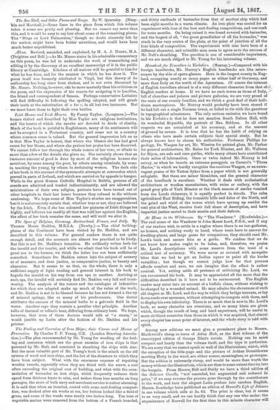The Fouling and Corrosion of Iron Ships; their Causes and
Means of 11-evention. By Charles T. F. Young, C.E. (London Drawing Associa- tion.)—The plan recommended by Mr. Young for warding off the foul- ing and corrosion which are the great enemies of iron ships is that patented by Mr. Daft, and consisted in sheathing the ships with zinc. But the most valuable part of Mr. Young's book is the attack on the old system of wood and iron ships, and the list of the disasters to which they have been subject. What with the enormous expense of repairing wooden vessels, especially when they are fitted with the screw, a cost often exceeding the original cost of building, and what with the accu- mulation of barnacles on iron ships, which frequently reduces their speed from thirteen knots to nine, and makes them lose months on long passages, the state of both navy and merchant service is rather alarming. It is said that when an ironclad, coated with some anti-fouling composi- tion, was docked after six weeks at sea, her bottom looked like a field of grass, and some of the weeds were nearly two inches long. Ten tons of vegetable matter were removed from the bottom of a French ironclad,
and thirty cartloads of barnacles from that of another ship which had been eight months in a warm climate. An iron plate was coated for an experiment with four of the best anti-fouling compositions, and was sunk for some months. On being raised it was found covered with barnacles, and the largest of all, "the great grandfather of all the barnacles," was stuck in the very centre of the plate, at the point of junction of all the four kinds of composition. The experiments with zinc have been of a different character, and scientific men seem to agree as to the success of Mr. Daft's sheathing. The question is one of considerable importance, and we are much obliged to Mr. Young for his interesting volume.






























 Previous page
Previous page